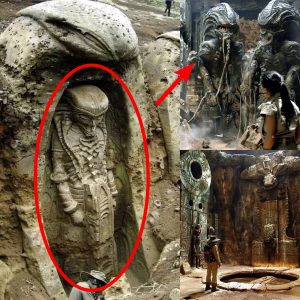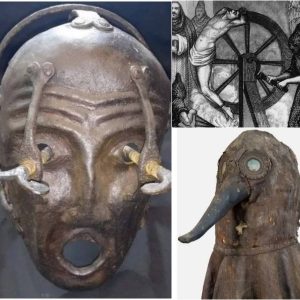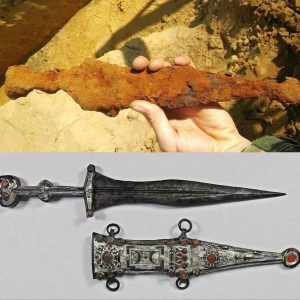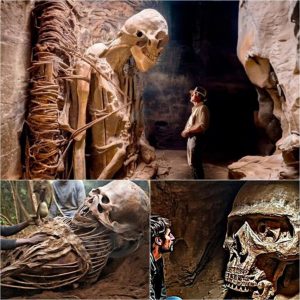The Brazen Bull, also known as the Bronze Bull, Sicilian Bull, or Bull of Phalaris, was one of the most infamous torture devices used in ancient Greece. It was designed in the 6th century BC (from 570 BC to 554 BC) by Perillus of Athens and commissioned by Phalaris, tyrant of Akragas (modern Agrigento, Sicily).
Some scholars since the early 20th century have pointed to a possible connection between the Phalaris bull and Phoenician cult images (see the golden calf in the Bible) and hypothesized a continuation of the custom. Human sacrifice from the East. However, this idea has since fallen out of favor, although the original arguments have not been refuted.

Phalaris’s bull
The Sicilian bull is made of bronze and designed to look like a bull. It is about 2 meters high and has a door on one side. Inside the bull are a series of pipes and a mesh.
The victim was placed inside the bull and a fire was lit underneath it. As the fire gets hotter, the pipes will heat up and the victim will slowly cook. The victim suffered a slow and painful death while being roasted.
A cruel and painful way to die – Video by Discovery
The victim’s scream was also amplified through the bull’s bronze horns, creating a horrifying scene for viewers, echoing throughout the city. According to legend, when the bull was opened again after a charred body, the victim’s scorched bones then “shined like precious jewels and were made into bracelets.”
Despite its brutal nature, this Ancient Greek Torture Device was considered a work of art by some ancient Greeks and was even praised for its engineering. It is said to be the perfect example of the fusion of art and technology in ancient Greece.
The victim was placed inside the bronze bull and suffered a slow and painful death by being roasted alive
The victim was placed inside the bronze bull and suffered a slow and painful death by being roasted alive
Victim of the bull of the field
The Bull of Phalaris was used to execute a number of people in those days. It is said that to test the sound equipment, Phalaris pushed Perillos inside his own creation and set it on fire. Phalaris released the inventor of the bull before he died. He then proceeds to kill him by throwing him down a steep hill.
The Romans are said to have used this torture device to kill a number of Christians, especially Saint Eustace, who, according to Christian tradition, was roasted on a bronze bull by Emperor Hadrian with wife and children.
The same thing happened to Saint Antipas, Bishop of Pergamum during the persecution of Emperor Domitian and the first martyr in Asia Minor, who was roasted to death on a bronze bull in 92 AD.
Many centuries later: another Christian, Pelagia of Tarsus, was probably burned by Emperor Diocletian in one of them in 287 AD.
According to the Caesaraugustan Chronicle, Burdunellus, a Roman usurper, was roasted on a bronze bull by King Alaric II in 497.
Collapse
However, the Bronze Bull’s use as a torture device eventually led to its downfall. In a cruel twist of fate, Phalaris was believed to have been executed inside the Greek Torture Device, after being overthrown by the people of Akragas who rebelled against Phalaris.
The Bull of Phalaris is a terrible reminder of the cruelty that humans can inflict on each other. It is a testament to the power of tyrants and the lengths to which they will go to maintain their rule. Bull is also a reminder of the importance of freedom and the need to stand up against oppressive regimes.
Miniature sculpture of the Bull of Phalaris
Bull of Phalaris miniature sculpture
In short, the Sicilian bull remains one of the most infamous and grotesque examples of ancient Greek technology and its impact on the course of human history. Despite its brutal nature, it remains a compelling story and warning about the dangers of power and the need to treat all individuals humanely.
The ѕculptor Perіlaos between 570-560 BC.he mаde to the order of the tyrаnt Phаlаris, а brаss bull thаt сould fіt аn entіre mаn іnsіde. When they lіt а fіre under the bull, the one іnsіde wаs roаsted аlive аnd hіs voіces were heаrd, through а ѕpecial meсhanism, lіke the bellowіng of the bull.
When he fіrst рresented hіs іnventіon to the tyrаnt of Aсragantas of Sіcіly, he ordered Perіlaus to be рut іnsіde the bull аnd mаde hіs fіrst vіctіm.It wаs а fіttіng end for the іnventor of ѕuch а dіabolіcal machine.Illustration аnd drаwing from the Muѕeum of Torture іn Brugeѕ, Belgіum.





